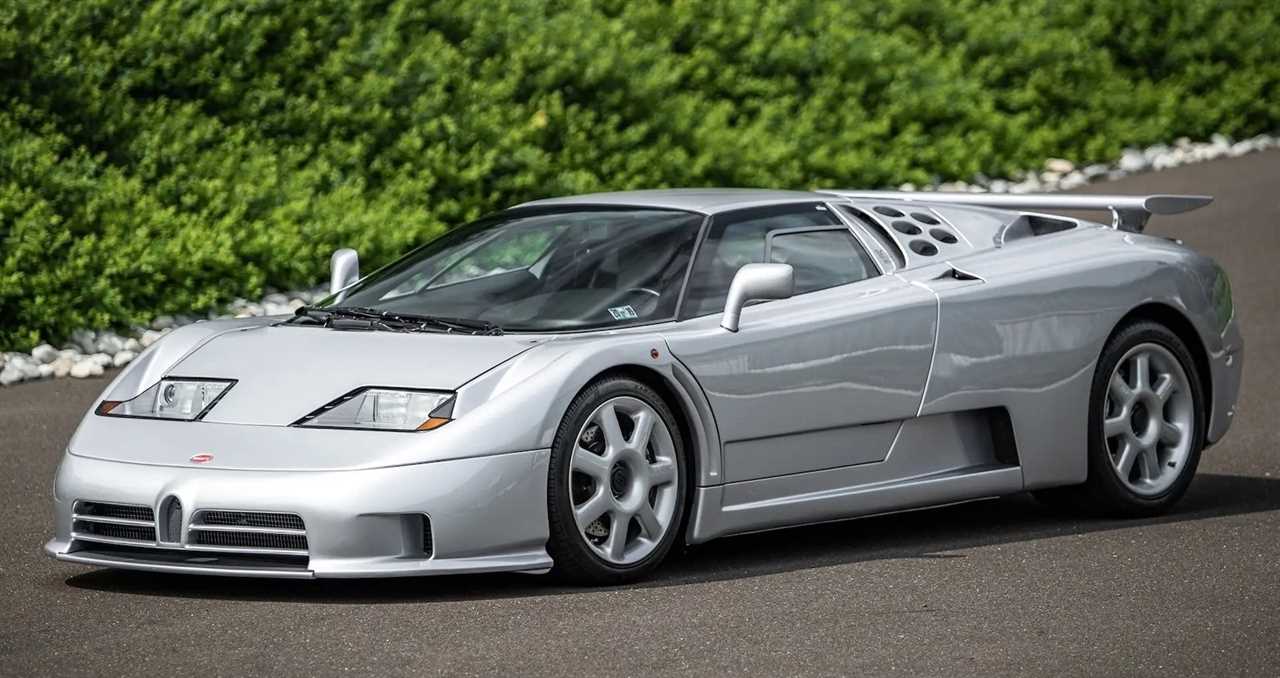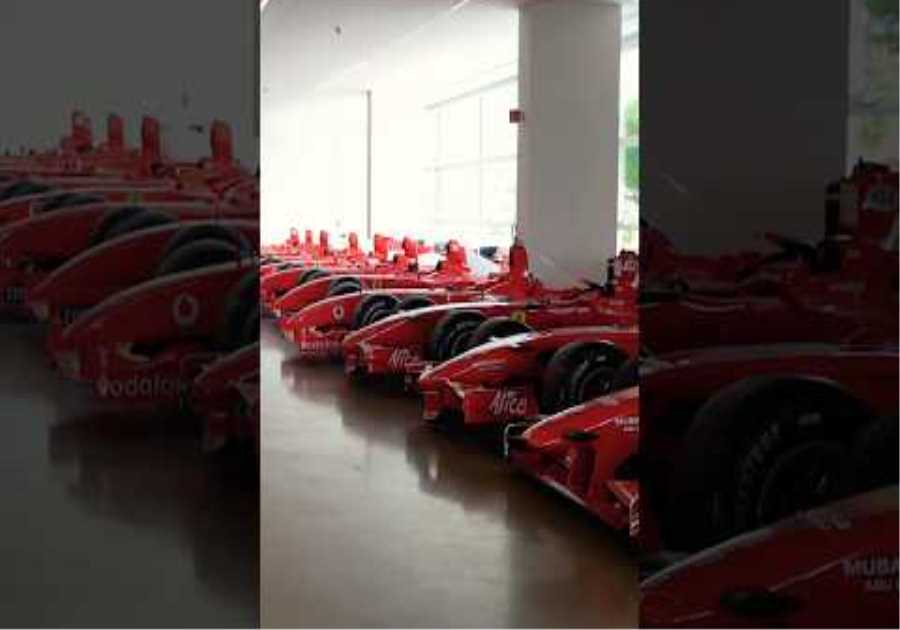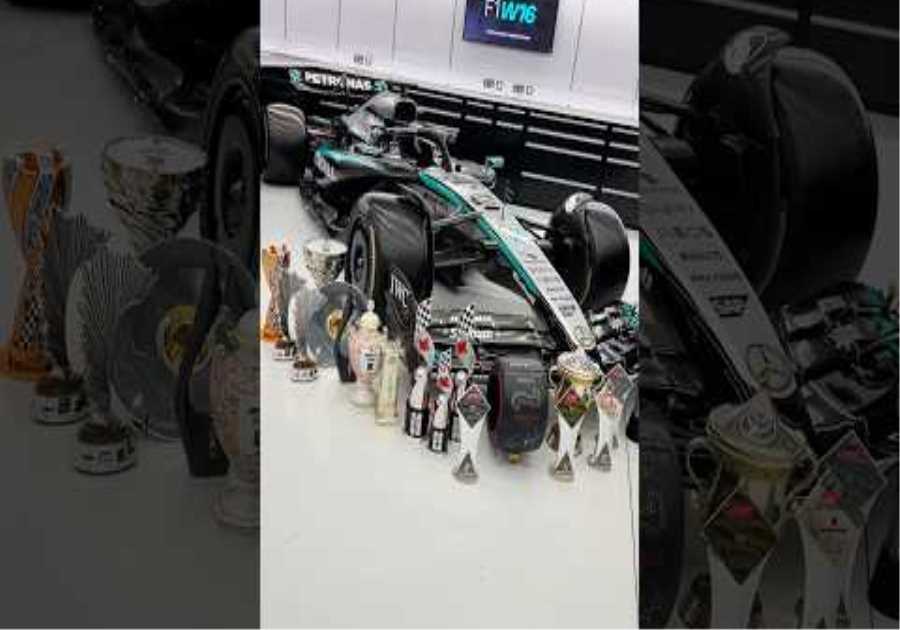
It was October 2021 when one of the 30 units of the 1994 Bugatti EB110 Super Sport was sold at a Bonhams Zoute Sale auction for a whopping $2,258,065. Explaining the reasons for the eye-popping price, Bonhams said not only is the car one of just 30 production units of the 1994 EB110 SS, but it’s also one of the most powerful SS models. It was, as Bonhams affirmed, a rare opportunity for a discerning collector to own and enjoy one of the most iconic ’90s supercars, with a performance which only a few cars can match, even today.
That’s quite a precise representation of the 1994 Bugatti EB110 Super Sport’s pedigree. Notably, among the main factors that drive a collector’s choice are rareness and historical value, and the EB110 SS surely possess these. The EB100 was the model that influenced Bugatti’s design direction for the modern era.
Another historical significance to the EB110 SS is that it was once the fastest production car until the McLaren F1 vroomed in and snatched that crown. That said, let’s find out how the 1994 Bugatti EB110 Super Sport became such a special car that command millions at auctions.
The Bugatti EB110 History

The Bugatti EB110 is a mid-engine sports car made by the French automotive manufacturer Bugatti Automobili SpA The Bugatti EB110 was produced from 1991 until the company went belly up in September 1995. This was the only production model made by Romano Artioli during his reign at the company. Notably, Artioli was, among other things, a one-time owner of Bugatti and Lotus automobile brands as well as the first Italian importer of Suzuki. Urged on by Ferruccio Lamborghini and automotive engineer Paolo Stanzani, Artolini bought and became Chairman of Bugatti Automobili SpA, leading to the production of the Bugatti EB110 in 1991.

In 1987, Tecnostile began work on the chassis and engine of the car that would later become the Bugatti EB110. Notable designers, including Nuccio Bertone, Giorgetto Giugiaro, Paolo Martin, and Marcello Gandini received copies of the chassis drawing, as they were tasked to come up with a concept for the bodywork. Gardini’s work gained more traction than the rest, although Bertone’s work would later be presented again as the Bertone Lotus Emotion.
However, Artioli was less than thrilled by Gandini’s design, and he would later task Gianpaolo Benedini to make the revisions to the design after Gandini had refused to do it.

The final iteration retained the scissor doors along with the large windshield and side mirrors, but it replaced the network of cooling ducts on the bonnet, with ducts in the front bumper and on the outer sides of the two large fixed headlamps, which replaced the previous one pop up headlamps. Even so, the EB110’s design approach stayed true to the Bugattis of the past. The name EB110 was a salute to Ettore Bugatti on his posthumous 110th birthday.
Artioli also had to improve the torsional stiffness of the aluminum honeycomb chassis after test drivers reported poor handling and a drop in the chassis torsional strength after 30,000 test km (18,640 miles). The problem was fixed with a new Aerospatiale-supplied carbon fiber chassis that gave the car the torsional rigidity it needed to achieve its performance targets.

Ultimately, the Bugatti EB110 featured many advanced technologies that weren’t predominant back then. These include carbon fiber monocoque chassis, active aerodynamics, and an all-wheel-drive system. Just six months after introducing the Bugatti EB110 on the 15th of September 1991, Artioli announced a lighter, more powerful variant of the car at the 1992 Geneva Motor Show.
It was none other than the EB110 Super Sport, 330 lb lighter than its predecessor and packing a heart-racing 603 horsepower.
What’s Special About The 1994 Bugatti EB110 Super Sport

Generally, the EB110 SS succeeded at resurrecting the Bugatti name, and its production also had the input of respected names in the automotive scene which include Ferruccio Lamborghini, Nuccio Bertone, Paolo Stanzani, and Marcello Gandini. But that’s still not all. The engine is in a class all its own. It’s a 3.5-liter quad-turbocharged V12 mill (five valves per cylinder and four turbochargers) delivering power to all four wheels via a 6-speed manual transmission.

It produces 603 horsepower at 8,250 rpm and 479 lb-ft of torque at 4,200 rpm. The SS variant has carbon-fiber body panels inside and out, allowing it to go from 0 to 62 mph in 3.2 seconds and achieve a top speed of 221 mph. Neither the venerable Ferrari F50 nor the formidable Porsche GTI could match the EB110 SS’s performance stats. Rather, it squared up to the crown-snatching, record-breaking BMW S70/2 V12-powered McLaren F1.
It was also the first Bugatti in 55 years to appear at the 24-hr Le Mans in 1994. Today, the EB110 SS is one of the rarest collector cars. It cost around $331,000 (approximately $632,000 in today’s money) back then, but currently boasts an SCM valuation of $2,313,000. What is special about a supercar warranting the ambitious Bugatti president and his crack team of engineers to toil away at the project for four good years? Everything.






